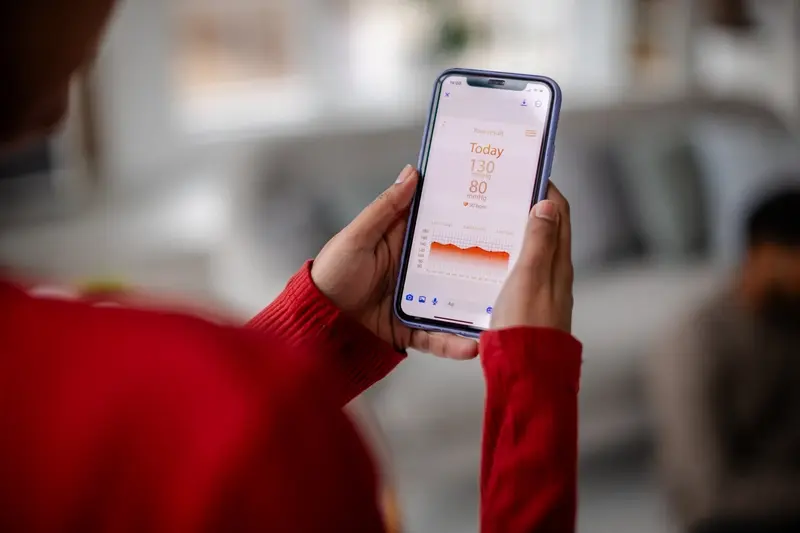What's the Difference Between MVP and Prototype?
Every successful mobile app starts with a single question: should we build a prototype or jump straight into developing an MVP? This decision can make or break your entire project—and I've seen countless startups get it wrong. The confusion between MVP vs prototype isn't just semantic; it's a fundamental misunderstanding that costs time, money, and often the entire product vision.
Here's what most people don't realise: prototypes and minimum viable products serve completely different purposes in the development phases. A prototype is like a sketch—it helps you visualise and test ideas before committing resources. An MVP, on the other hand, is your first real product that goes to market with actual users.
The biggest mistake I see founders make is treating these product stages as interchangeable when they're actually complementary parts of a smart development strategy
Understanding when to use each approach can save you months of wasted development time and thousands in unnecessary costs. Whether you're a startup founder, product manager, or just someone with a brilliant app idea, getting this right from the start sets the foundation for everything that follows. Let's break down exactly what each one does, when to use them, and how they work together to bring your vision to life.
What Is a Prototype: Understanding the Basics and Purpose
Think of a prototype as your app's first sketch—but one you can actually touch and play with. I've watched countless clients get excited about wireframes and mockups, only to realise they needed something more tangible to really understand their idea. That's where prototypes come in; they're interactive models that show how your app will work without all the complex coding behind the scenes.
A prototype isn't a real app—it's more like a clever fake that demonstrates your concept. You can tap buttons, swipe through screens, and see transitions, but there's no actual database or server running things. It's brilliant for testing ideas quickly and cheaply before committing to full development.
What Makes a Good Prototype
The best prototypes I've seen focus on core user journeys rather than trying to show everything at once. They answer key questions about user flow and interface design without getting bogged down in technical details.
- Shows main user interactions and screen transitions
- Demonstrates key features and functionality
- Allows stakeholders to experience the concept firsthand
- Identifies usability issues early in the process
- Helps communicate ideas to developers and investors
Prototypes save time and money by catching problems before development starts. They're perfect for getting feedback from users, investors, or your development team about whether you're heading in the right direction.
What Is an MVP: Defining the Minimum Viable Product
Right, let's talk about MVPs—and no, I don't mean Most Valuable Player! In the mobile app development world, MVP stands for minimum viable product. Think of it as the simplest version of your app that people can actually use and get value from.
An MVP isn't just a fancy demo or something to show off to investors. It's a real, working product that solves a specific problem for real users. The key word here is "viable"—it needs to work properly and provide genuine value, even if it doesn't have all the bells and whistles you dream of adding later.
The Core Purpose of an MVP
The whole point of building an MVP is to test your assumptions about what users actually want. You might think feature X is brilliant, but until real people are using your app and giving feedback, you're just guessing. An MVP lets you validate your idea without spending months building features that nobody wants.
Start with one core feature that solves your users' main problem. Everything else can wait until you've proven that people actually want what you're building.
What Makes a Good MVP
A solid MVP should include these elements:
- One main feature that solves a real problem
- Basic user interface that's easy to understand
- Core functionality that actually works
- Simple way for users to give feedback
- Ability to collect usage data
The beauty of an MVP is that it gets you real user feedback quickly. You can then use this feedback to improve your product in the right direction, rather than adding features nobody asked for.
Key Differences Between Prototypes and MVPs: Functionality, Purpose, and Audience
Right, let's get straight to the point—prototypes and MVPs are completely different beasts, and mixing them up is one of the biggest mistakes I see clients make. The confusion is understandable though; both involve building something before your final product exists.
A prototype is like a rough sketch that shows how your app might work. It's not functional in the traditional sense—you can't download it from the app store or use it to actually solve problems. Instead, it demonstrates your concept through clickable screens and basic interactions. Think of it as a visual conversation starter that helps you test ideas quickly and cheaply.
Purpose and Audience Differences
MVPs serve a completely different purpose. They're real, working products that actual users can download and use to solve genuine problems. The audience for each is worlds apart too:
- Prototypes are for internal teams, stakeholders, and investors
- MVPs are for real customers who need your solution
- Prototypes test concepts and gather feedback on design
- MVPs validate market demand and business models
Functionality Gaps
The functionality difference is massive. Prototypes might show you tapping a button, but nothing actually happens behind the scenes. MVPs have real databases, user accounts, and working features—even if they're basic. You're comparing a movie trailer to the actual film.
When to Build a Prototype: The Right Time and Circumstances
I've worked on hundreds of mobile apps over the years, and I can tell you that knowing when to build a prototype isn't always obvious. Many clients rush straight into development without properly testing their ideas first—and that's a costly mistake. The best time to create a prototype is right at the beginning, when you have a concept but aren't sure how it should work or feel.
You should build a prototype when you need to test user interactions, explore different design approaches, or validate whether your app idea actually makes sense. If you're unsure about the user journey or how people will navigate through your app, a prototype is your best friend. It's also perfect when you need to get stakeholders on board or secure funding; showing beats telling every single time.
Building a prototype early saves you from expensive mistakes later—it's much cheaper to change a design than rebuild an entire app
The sweet spot for prototype development is during the planning phase, before any serious coding begins. This is when you can experiment freely without worrying about breaking existing functionality. Don't wait until you've already started building your MVP—by then, you've missed the boat and you'll be making changes to something that's already taking shape.
When to Build an MVP: Making the Strategic Decision
I've worked with countless startups over the years, and there's one pattern I see time and time again—everyone wants to build the next big thing straight away. But here's what I've learned: sometimes you need to slow down and think strategically about when an MVP is actually the right choice.
The sweet spot for building an MVP comes when you've already validated your core idea through prototyping and user testing. You know there's genuine demand for what you're building, and you've got a clear understanding of your target audience. This isn't about rushing to market—it's about making a calculated move when the timing is right.
Perfect Timing Indicators
You should consider building an MVP when you can tick off these boxes:
- Your prototype testing shows strong user engagement and positive feedback
- You've identified a clear problem that your solution addresses effectively
- There's a defined market opportunity with real potential customers
- You have sufficient resources to build, launch, and iterate based on feedback
- Your team understands the core features needed for a functional product
The biggest mistake I see is building an MVP too early, before properly understanding what users actually want. Take the time to get your foundations right—your MVP will be much stronger for it.
Common Mistakes When Building Prototypes and MVPs: What to Avoid
After years of working with startups and established companies, I've seen the same mistakes happen over and over again when teams build prototypes and MVPs. These errors can cost you time, money, and sometimes your entire project.
The biggest mistake I see is people treating prototypes like final products. They spend weeks perfecting animations and polishing every pixel when they should be focusing on testing core concepts. Remember, prototypes are meant to be quick and dirty—not Instagram-ready.
Prototype Development Pitfalls
With MVPs, the opposite problem occurs. Teams launch products that are too minimal, missing features that users actually need. There's a difference between viable and unusable. Your minimum viable product should still solve the main problem properly.
- Building prototypes with production-ready code
- Adding too many features to your MVP
- Skipping user testing during development phases
- Not defining clear success metrics
- Treating feedback as optional rather than essential
Set a strict time limit for your prototype—one week maximum. This forces you to focus on what really matters and stops you from getting lost in unnecessary details.
Product Stages Gone Wrong
Another common error is jumping between product stages without proper validation. You can't skip from idea to MVP without prototyping first. Each stage serves a purpose and rushing through them usually means starting over later.
Conclusion
After eight years of building mobile apps, I can tell you that understanding the difference between prototypes and MVPs will save you both time and money. They're not the same thing—and treating them as such is one of the biggest mistakes I see people make. A prototype is your testing ground where you explore ideas and see what works; an MVP is your first real product that actual users will pay for and use.
The key is knowing when to use each one. Start with a prototype when you're still figuring out what your app should do or how users might interact with it. Move to an MVP when you've validated your core idea and you're ready to test it with real users in the real world. Don't skip the prototype stage thinking it'll speed things up—it won't. And don't get stuck in prototype mode forever either.
Your prototype should help you learn; your MVP should help you earn. Both serve different purposes in your app development journey, and both are valuable when used correctly. The teams that get this right are the ones that build successful apps that users actually want to use.
Share this
Subscribe To Our Learning Centre
You May Also Like
These Related Guides

What's The Difference Between Building A Fitness App And A Nutrition App?

What's Different When Building a Travel Guide App and a Booking App?



